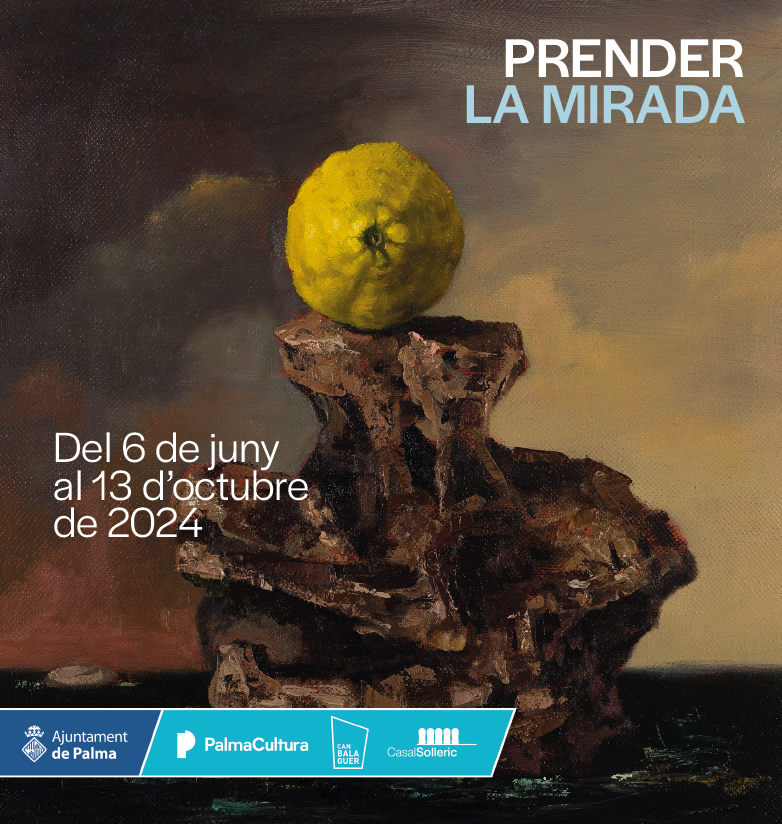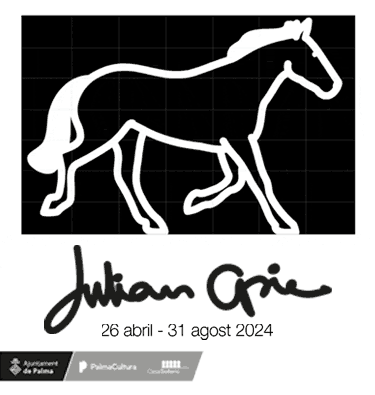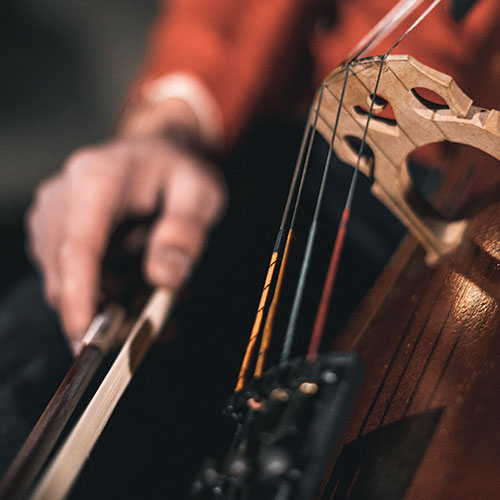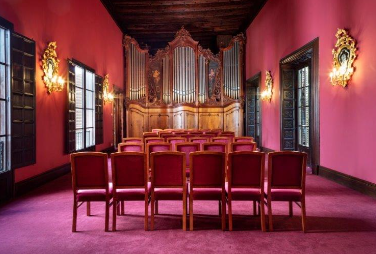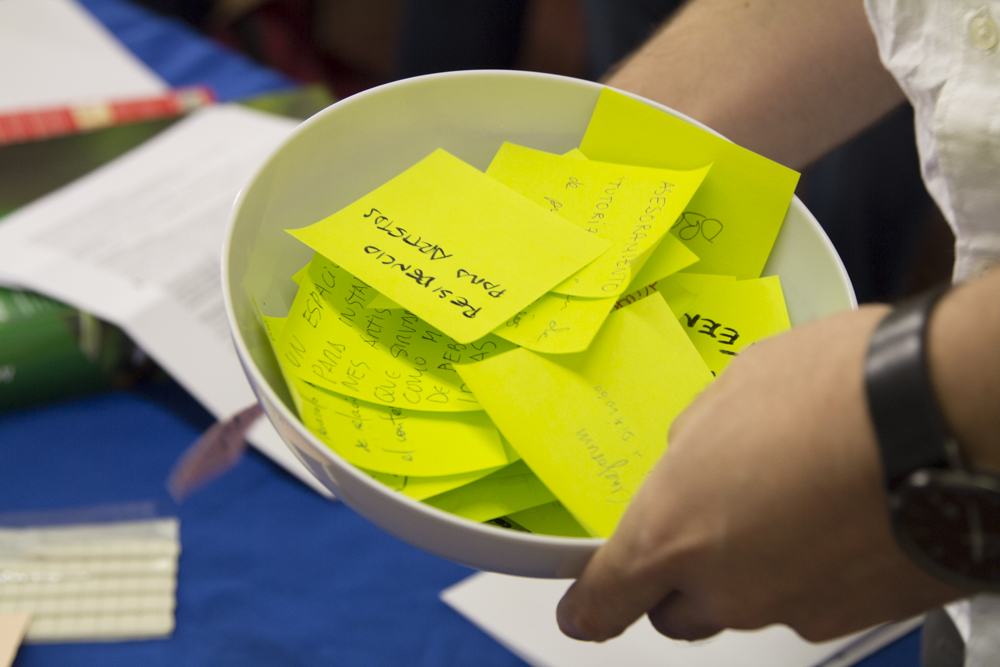Prender la Mirada - Casal Solleric
Prender la Mirada
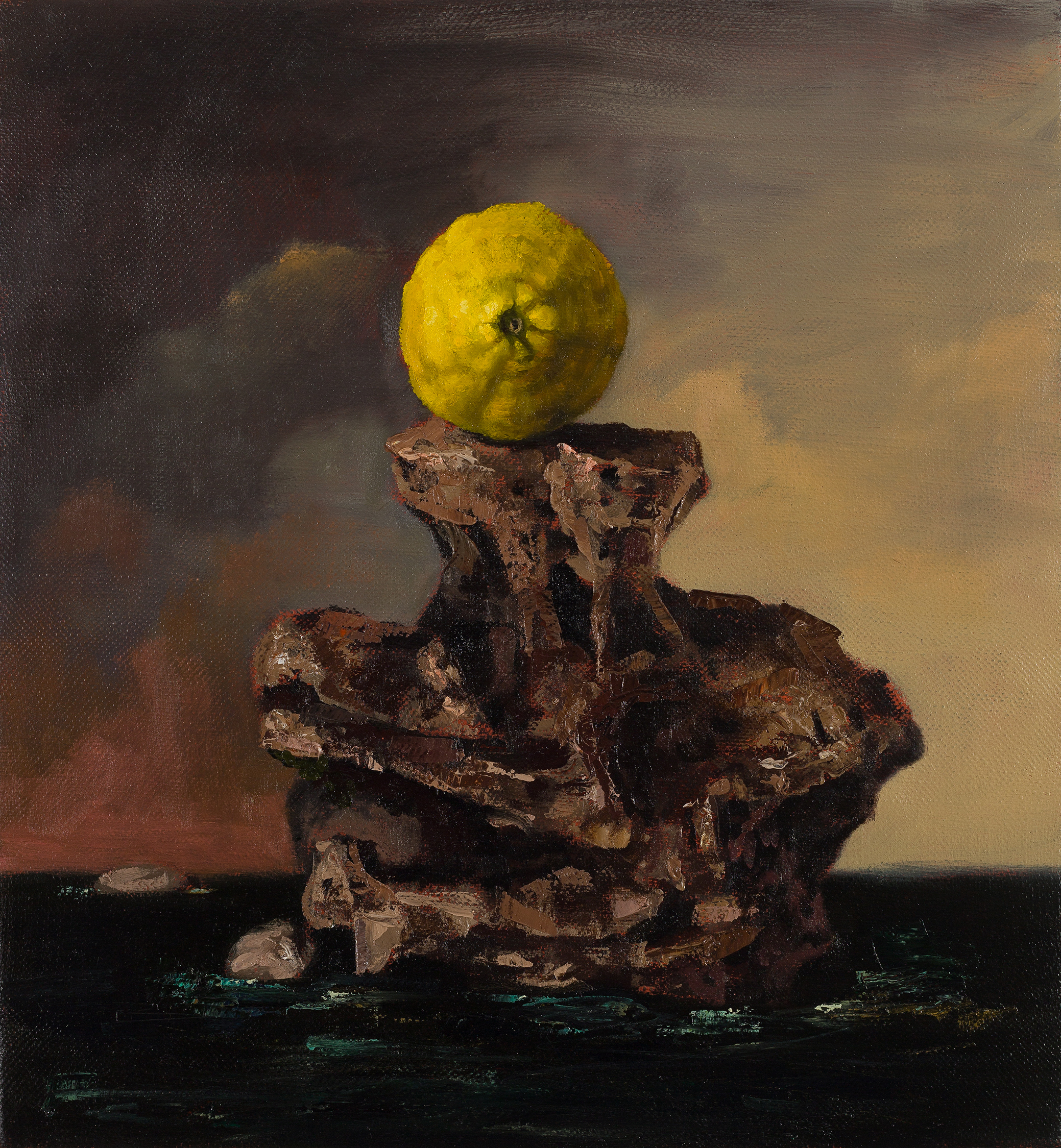
Capturing the Gaze
An Essay on Contemporary Painting
"No one belongs to a place because they were born there, but because their gaze has been captured there." – María Zambrano.
The term "essay" carries a dual meaning. On one hand, it refers to the act of reflection and the construction of thought through writing. On the other, it suggests repetition and the potential for error, but in the process of perfecting something. In both cases, the word denotes process and a certain inclination towards complexity.
This exhibition is an essay, in the sense that it aims to reflect on and question painting, but also other issues such as the relationship with artistic conventions, with the territory, and the sense of belonging to a place. It brings together the work of Mati Klarwein, Rafa Forteza, Barbara Weil, Mercedes Laguens, Tomás Pizá, Jorge Diezma, Bel Fullana, Román Fabré, Tomáš Absolon, Thomas Perroteau, Ian Waelder, Joan Canyelles, Alba Suau, Adrián Martínez, Maite y Manuel, and Mercedes Balle. This group of artists who engage with the pictorial surface, whether to respect its limits or to exceed them, and with the territory of the island, whether to stay in it, leave, or return.
The exhibition is constructed around certain concepts and curatorial lines related to journeying and the surface of painting: genealogies, landscapes, materialities, journeys, and, finally, expanded painting, which goes beyond the limits of the canvas or the conventions of painting practice and form. The different thematic lines meet and diverge, intersecting and, through the work of the participating artists, intertwine to form an exhibition made of captured gazes.
- Genealogies
If we are to begin this essay somewhere, it is precisely with genealogies. These are the practices of artists whose experiences extend back in time, but leave their mark on the present and on contemporary painting: either because they continue to produce tirelessly producing, or because they have left an indelible imprint wherever they have done so. The story of how Mati Klarwein (Hamburg, 1932 – Deià 2002) arrived on the island in 1952 is well-known. He was heading to Ibiza, but as he recounted, a storm made Mallorca an obligatory stopover:
"I had to kill a whole day, and I decided to visit my friend Bill Waldren in Deià, but when the bus left Valldemossa and took the fatal curve that opens with a single sweeping gesture to the entire north coast of Mallorca, unfolding a view of the oceanic blue and terraces that takes your breath away, I knew that, just as a bee recognizes its hive and a falcon its prey, I had found my home."
This deep impression left on him by the island's geography is intertwined in his paintings with a search for the transcendent. Rocks and meteorites, which connect the earth with the whole, are very present in his paintings of the 1980s. "Satori" (1987-89), a painting included in this exhibition, shows a rock looking into a mirror. In the preparatory sketch, the rock exclaimed "that's me!", but in the final work this exclamation does not exist, leaving it silent in front of its own reflection while a small red stream emanates from it.
This same inclination towards the transcendent is found in the work of the Mallorcan artist Rafa Forteza (Mallorca, 1955), through the experience of the cyclical. In his paintings, devoid of hierarchical laws, the artist is able to generate a play of overlapping spaces through the repetition of certain patterns. A good example is the painting "Cruces de misterio" (2021), in which many of the elements that appear recurrently in his pictorial production can be distinguished: geometric, organic, and vegetal forms, shapes that undulate and vibrate like momentary bursts of color.
The pursuit and experience of the limit is constantly manifested in the work of Mercedes Laguens (Zaragoza, 1953) in a poetic way. In this sense, folds, breaches, and cracks articulate the pictorial space, guiding an exploration as intuitive as it is philosophical. The felt pieces included in the exhibition leave the wooden stretcher visible and allow us to peer into a small void. In the artist's paintings, the treatment of objects stands out: forceful, sober, and full of dignity, they cut out their imperfect contours before the limit-line that is the horizon.
The horizon is always present in the work of Barbara Weil (Chicago, 1933 - Port d'Andratx, 2018). Her arrival on the island was not so much a happy accident as a planned adventure, but like Mati Klarwein, she was captivated by this place and developed most of her pictorial production there. Moving horizons, like successive waves of vibrant colors, inhabit her paintings and connect us with the experience of the island's geography.
- Landscapes
If there is any declared influence in Barbara Weil's abstract and colorful paintings, it is precisely her surroundings, the landscape of Mallorca, and the spiritual connection with the island where she remained for over forty years. The landscape itself emerges as a theme in figurative pictorial practices, such as that of Tomás Pizá (Palma de Mallorca, 1983). From his background as an architect, he analyzes forms and perspectives around him, being able to encapsulate the energy of liminal urban spaces and thus becoming a flâneur. Fleeting snapshots, like a palm tree in the sun, create a growing cartography of places that nourish his pictorial production.
Meanwhile, Jorge Diezma (Madrid, 1973) creates landscapes and still lifes, paying attention to the permanent conflict between matter and representation. In his most recent paintings, there is an exploration of the sea and the horizon that is directly related to the experience of insularity. It seems that the smaller the island, the more pronounced this experience becomes. For example, the painting "Isla del limón" (2023) shows a solitary lemon resting on a rock, which seems to emerge slowly from a dark sea. Finally, in her series "Sex on the beach" (2016), Bel Fullana (Mallorca, 1985) analyzes with a sharp sense of humor the representations of touristy Mallorca with all its contradictions and sordidness, the one we inhabit during the high season.
- Materialities
Representation takes a back seat in this curatorial line, which focuses on the presence of painting and its own materiality. The dialectical relationship between landscape and geometric abstraction is well-known in art history: Mondrian himself attained his canonical geometric works of primary colors through a process that starts from wooded landscapes. Among the trees, Román Fabré (Palma de Mallorca, 1999) installed one of his large-format paintings some time ago, making a powerful statement. Since then, he has continued to explore large formats, geometries, and color variations to develop a plastic language that sometimes addresses the limits of pictorial representation and issues of scale. How big is a soccer field? His recent diptychs address these questions through the large format, tempting us to run across the canvas.
Tomáš Absolon (Czech Republic, 1987), who has developed much of his career on the island, continues to explore the materiality of painting through the imagery of water and fluids. His works seem the momentary materialization of a liquid element in constant flux. Meanwhile, the French artist based in Mallorca, Thomas Perroteau (Paris, 1992), investigates the stories and imaginaries of sailors as paradigmatic figures of the relationship with islands and the sea. He creates his paintings through a slow process with cut-outs and accumulations, making the figures blur and the textures take center stage.
- Journeys
Painting expands to encompass journeys and experiments with other media. Joan Canyelles (Pòrtol, 1987) makes monochromatic compositions with a digital aesthetic that resembles the pixelated traces left by old mouse cursors. His acrylics on wood are based on the alternation between repetition and difference, since a journey, as a performative action, can never be the same.
On the other hand, Ian Waelder (Madrid, 1993) connects with pictorial practice from his background as a skater in the streets of Palma to his exploration of the family history connecting him to Germany, where he now lives. His works on canvas embrace traces, oil stains, and black-and-white photographic images. The series of works on newspaper included in this exhibition is titled "Here Not Today" (2021–Ongoing) and began during a car journey between Frankfurt and Berlin, buying newspapers at gas stations and using snacks to intervene in them. The result are fragile surfaces, framed in glass, where images and text coexist with random stains.
Alba Suau's artistic practice (Pollença, 1997) is shaped by a continuous rhythm of walking and inhabiting. As a flâneuse, her experiences of wandering through diverse cities enrich the experiential foundation from which her paintings emerge. Color stains appear to traverse the canvas, echoing the fluidity of her journeys.
- Expanded Painting
In the exhibition, painting gradually overflows and converges with other languages, processes, and media, such as the paradigm of collaboration or the use of unconventional materials. The work of Adrián Martínez (Ibiza, 1984) explores the narrative potential of humor in his textile works, which he makes on native wool, collaborating in a wool recovery project in Mallorca and using organic dyes.
Alongside these works, he also reflects on the practice of painting itself through drawings and animations that reveal the contradictions and frustrations inherent in the pictorial process.
From this paradigm that questions the idea of individual authorship, the duo of artists Maite and Manuel from Uruguay (Uruguay, 1996 / Uruguay, 1991) embark on a daily and collaborative practice of painting. Their works engage in a continuous dialogue through lines and color stains. The resulting paintings are like a conversation, where one hand asks, the other responds, until the surface of the canvas is fully occupied.
Lastly, in this effort to expand painting, there is also a loss of material to explore other possibilities and creative processes that do not rely on direct intervention, but rather on initiating a process and letting it unfold. In this sense, Mercedes Balle (Palma, 1991) finds what she defines as painting without paint, made from window frames and scaffolding fabrics of different colors. Thus, the journey through the exhibition leads us to an expanded and even dematerialized pictorial practice: a painting that ultimately disappears as it seeks its own limits.
Esmeralda Gómez Galera
Palma, 2024
Capturing the Gaze
Artist list: Mati Klarwein, Rafa Forteza, Barbara Weil, Mercedes Laguens,Tomás Pizá, Jorge Diezma, Bel Fullana, Román Fabré, Tomas Absolon, Thomas Perroteau, Ian Waelder, Joan Canyelles, Adrián Martínez, Alba Suau, Maite y Manuel, Mercedes Balle.
Curator: Esmeralda Gómez Galera
From June 6, 2024 to October 13, 2024
Planta Baixa i Entresol / Casal Solleric
Date last modified: June 5, 2024


